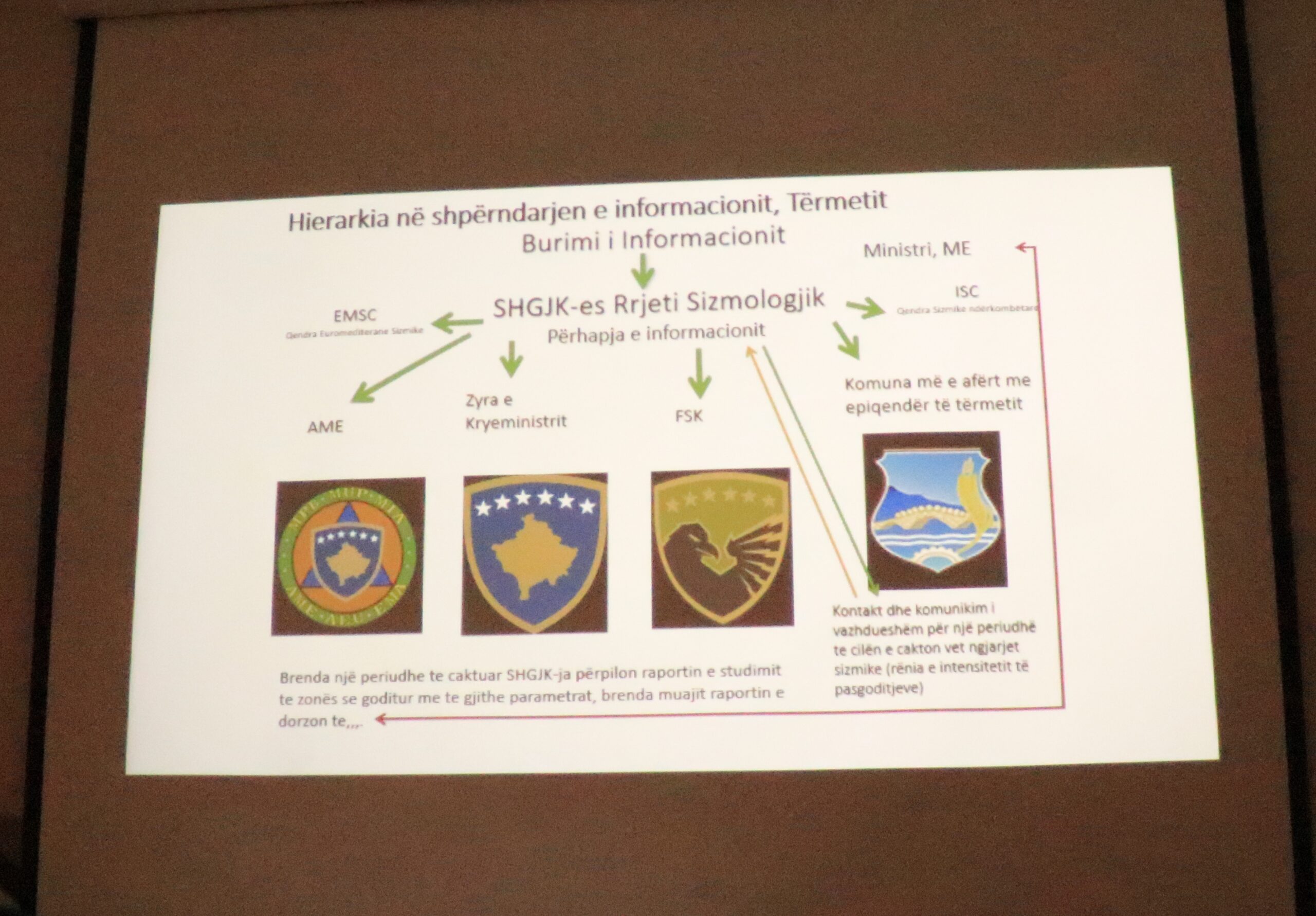Workshop on Seismic Risk Assessment and Management
Prishtina, 24.10.2023 – The Geological Service of Kosovo (GSK), supported by IPA CARE Program – Cluster 2 Seismic Risk, held an inter-institutional workshop on seismic risk assessment and management.
During the conference, scientific studies and seismic maps were presented regarding the seismic condition of the territory of the Republic of Kosovo from a historical perspective. These findings will serve as a platform for exchanging experiences regarding seismic risk, standards, and building codes.
Mr. Luan Morina, Acting General Director of GSK, emphasized that the Geological Service of Kosovo, operating under the Ministry of Economy in accordance with applicable legislation, holds institutional responsibility for monitoring and providing relevant information on seismic activity. This information is further processed by relevant institutions at the national level.
Additionally, Mr. Augostino Gorentti from IPA CARE-Cluster 2 presented the program and outlined opportunities for determining support priorities from relevant institutions in the Republic of Kosovo.
Subsequently, Mr. Shemsi Mustafa, Head of the Geophysics and Engineering Geology Division at GSK, and with representatives from other institutions, presented scientific information and perspectives on seismic risk management.
Kosovo is a region with relatively high seismic activity. It has been struck in the past and may be struck in the future by strong earthquakes originating at specific epicenters within the Earth’s crust, maximum at depths of 15-25 km below the surface. According to the Seismic Risk Map, Kosovo has three main seismic source areas: the Prizren-Peja seismic zone, the Ferizaj-Viti-Gjilan seismic zone, and the Kopaonik seismic zone.
During the workshop, historical data on earthquakes that have affected the Kosovo territory from 1456 to 31.09.2021, were presented. The earliest recorded earthquake is the one that struck Prizren in 1456 and was one of the most powerful earthquakes ever recorded in Kosovo, with a magnitude of 6.1 on the Richter scale. In 1662, Peja experienced a powerful earthquake with a magnitude of 6.0, and in 1921, Ferizaj was struck by a strong earthquake with a magnitude of 6.1 on the Richter scale.
Additionally, the three most powerful earthquakes in recent years were the earthquake that struck the Gjilan region on April 24, 2002, with a magnitude of 5.7 on the Richter scale, the Istog earthquake that occurred on March 10, 2010, with a magnitude of 5.2, and the earthquake that struck the Vushtrri region on November 18, 2013, with a magnitude of 4.8.
Representatives from the Ministry of Economy, Ministry of Internal Affairs, Ministry of Environment, Spatial Planning and Infrastructure, Italian Civil Protection, Seismology Researchers from the University of Prishtina, University of Mitrovica, and the Municipality of Pristina participated in the workshop.


